Today was a big day for Awe and I in Green Tech. We began class by just reviewing the information on elab.hpa.edu while Dr. Bill was going around talking to individuals about their projects. Then, when Dr. Bill got to our project, we went over how the sensors worked. We started out by just talking about the cottages. Awe and I are also going to be keeping track of all six cottages and we are going to make some kind of directory page that contains certain information about each cottage. We also went over how CO2 is going to start to become a big deal because people get taxed on the CO2 produced while making the energy to power their house or business. We also talked about how TED sensors are going to be put around the school so we record the energy history, and make changes. They are already set up around the energy lab. Two sensors that we talked about are the TED Solar for the energy lab, recorded on IP address 10.14.64.2, and the TED sensor for the energy lab use recorded on 10.14.64.4. When we visited these IP addresses, we noticed that neither sensor was currently reading any activity, so that's when Dr. Bill decided to take us down and show us how everything worked, and how the sensors talked to each other.
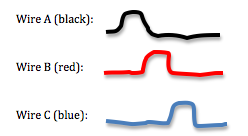 NOTES
NOTES:
•Energy lab has 3 phase wires (picture on the right)
•Blue wire-White wire: 110volts
-Middle wire: 220volts
•Normal house--has 3 wires
1. 120volts
2. 0volts
3. -120(?) volts
-Main energy suckers are the dryer, stove, water heater, oven, and anything that generates a lot of heat
•TED SENSORS-->makes clamps, records history, makes it possible to change energy use
-sensors talk to each other, and check up on each other
–clamps-->wire--->converter (box)--->recordings/measurements
•CLAMPS:
-has lots of iron
-everytime a current goes through clamp and changes direction it creates a magnetic field.
-more magnetic force=more energy
-0-5volt signal (clamps put out 5v when receives 60 Amps)
•P=V*I
Power(watts)=volts*Amps
Volts=Pressure
Amps=Flow
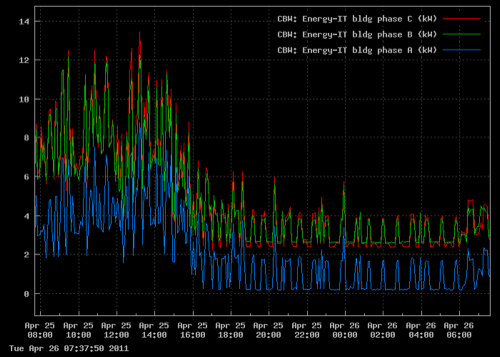 The next thing we went over is how to tell different graphs apart. For example, this is a graph of the energy used on April 25 and it carries over to the 26th. In a graph from a place like the IT building, it will have lots of little spikes throughout the day from the AC and the computers. But, in a place like the Tennis center, there will be one big spike then stabilize for the most part (there will be spikes within the stable part) and then drop when the power goes off for the night. And for a place like the cafeteria, there will be lots of little spikes during the day because people will be opening the fridge constantly, but at night, when the fridge closes, the graph will drop but not completely because the power is still on. The next, and last thing we talked about were the TED sensors in the cottages. We talked about how Mr. Kamrow's house has solar panels so when you look at it on the IP address, it shows negative numbers for the kW per hour. From this we went into PDA deals with the bank and how solar panels have to tax break.
The next thing we went over is how to tell different graphs apart. For example, this is a graph of the energy used on April 25 and it carries over to the 26th. In a graph from a place like the IT building, it will have lots of little spikes throughout the day from the AC and the computers. But, in a place like the Tennis center, there will be one big spike then stabilize for the most part (there will be spikes within the stable part) and then drop when the power goes off for the night. And for a place like the cafeteria, there will be lots of little spikes during the day because people will be opening the fridge constantly, but at night, when the fridge closes, the graph will drop but not completely because the power is still on. The next, and last thing we talked about were the TED sensors in the cottages. We talked about how Mr. Kamrow's house has solar panels so when you look at it on the IP address, it shows negative numbers for the kW per hour. From this we went into PDA deals with the bank and how solar panels have to tax break.  NOTES:
NOTES: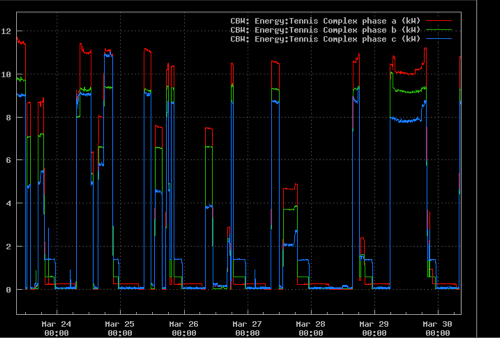 AUTOMATION SYSTEM:
AUTOMATION SYSTEM:
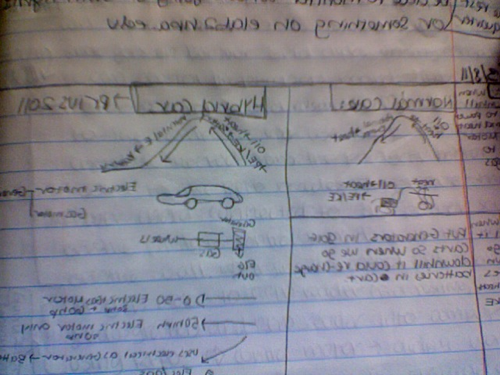 Yesterday, we started out Green Tech class talking about hybrid cars. When a normal car goes up hill it uses heat to go up and going down hill it creates heat from oil and the heat turns into potential energy and kinetic energy. But, when a hybrid car goes downhill it uses heat to power it and when it goes uphill it uses heat and oil. Also, its generator is connected to the gas and motor. This basically means that hybrid cars use the energy being made when the car goes downhill to power it later. First, we talked about using this with our golf carts, then we went over some hybrid cares out now, and their pro's and con's.
Yesterday, we started out Green Tech class talking about hybrid cars. When a normal car goes up hill it uses heat to go up and going down hill it creates heat from oil and the heat turns into potential energy and kinetic energy. But, when a hybrid car goes downhill it uses heat to power it and when it goes uphill it uses heat and oil. Also, its generator is connected to the gas and motor. This basically means that hybrid cars use the energy being made when the car goes downhill to power it later. First, we talked about using this with our golf carts, then we went over some hybrid cares out now, and their pro's and con's. 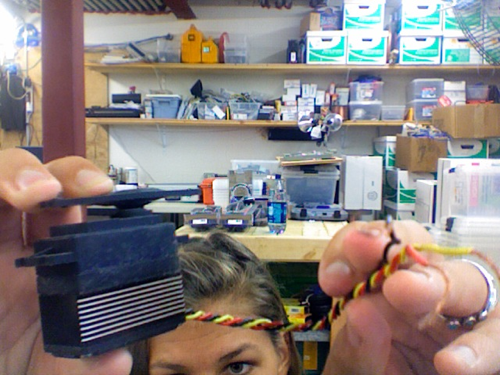 Today, we started out Green Tech class by taking a quiz. he quiz was four questions taken from thing posted on our weblogs. After this, Lucas, Awe and I went down to the workshop to play around with the RFID kit. The first thing we did was test the +5V output on the phidgets RFID reader. We needed to do this to make sure we can get the reader to open a gate or unlock a door. To do this we plugged in the motor in the picture on the right, to the RFID reader. The red wire being positive, the black wire being negative and yellow being the ground wire. The motor should have started running when we ran the RFID tag by the reader but we did something wrong and so it did not work.
Today, we started out Green Tech class by taking a quiz. he quiz was four questions taken from thing posted on our weblogs. After this, Lucas, Awe and I went down to the workshop to play around with the RFID kit. The first thing we did was test the +5V output on the phidgets RFID reader. We needed to do this to make sure we can get the reader to open a gate or unlock a door. To do this we plugged in the motor in the picture on the right, to the RFID reader. The red wire being positive, the black wire being negative and yellow being the ground wire. The motor should have started running when we ran the RFID tag by the reader but we did something wrong and so it did not work. 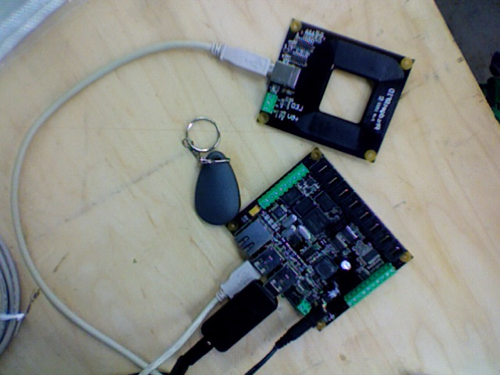 The second thing we did down in the workshop was try to control the RFID reader wirelessly. To do this we plugged the phidgets motor control board into the RFID reader, the USB chord was connected from the phidgets motor control board to the RFID reader, and we had the power chord connected to the power source on the phidgets motor contol board and to an outlet on the wall. Later, to set up the wireless control, we plugged in a bluse USB chord connecting the computer and the phidgets motor control board. Also, we had to update firmwire and reboot my computer on phidgetsbc.local. We didn't get the this working either so next class we will continue working on getting the wireless connection along with the motor working.
The second thing we did down in the workshop was try to control the RFID reader wirelessly. To do this we plugged the phidgets motor control board into the RFID reader, the USB chord was connected from the phidgets motor control board to the RFID reader, and we had the power chord connected to the power source on the phidgets motor contol board and to an outlet on the wall. Later, to set up the wireless control, we plugged in a bluse USB chord connecting the computer and the phidgets motor control board. Also, we had to update firmwire and reboot my computer on phidgetsbc.local. We didn't get the this working either so next class we will continue working on getting the wireless connection along with the motor working. 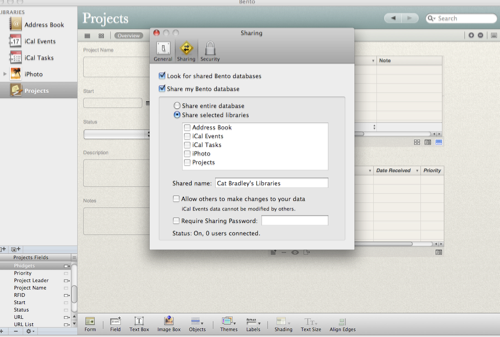
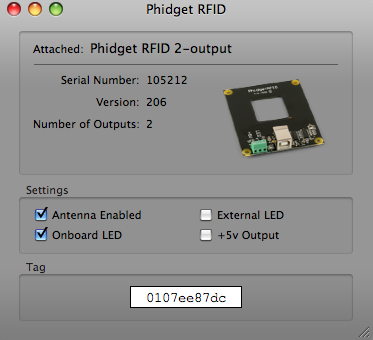
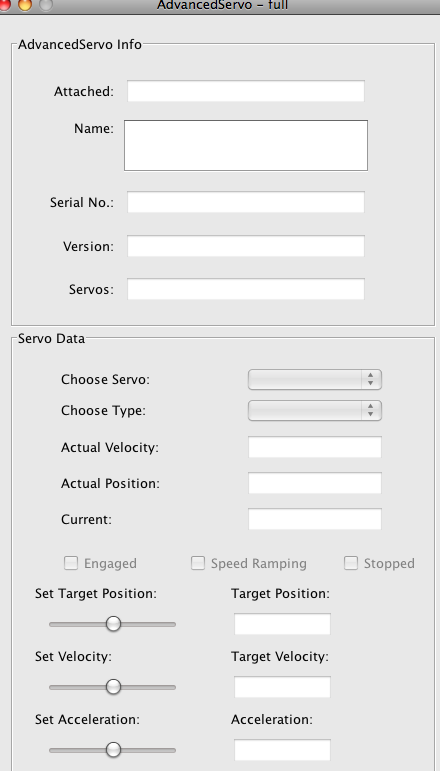
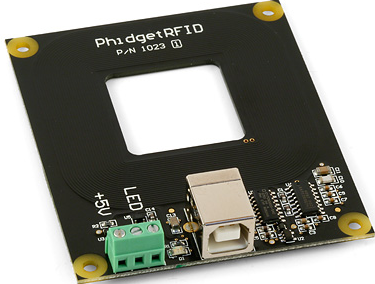
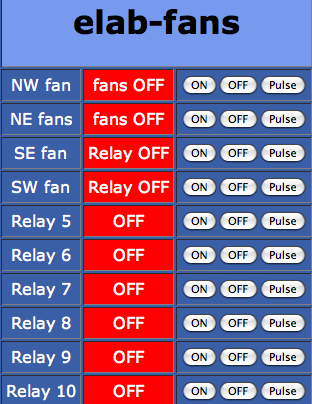 Test.html••••••••••.xml
Test.html••••••••••.xml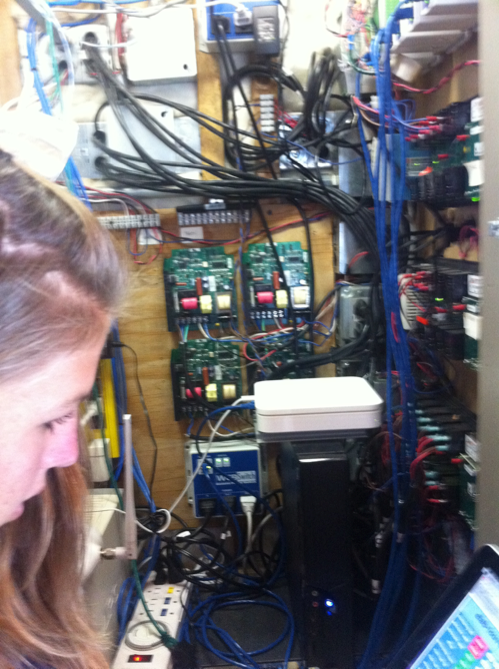
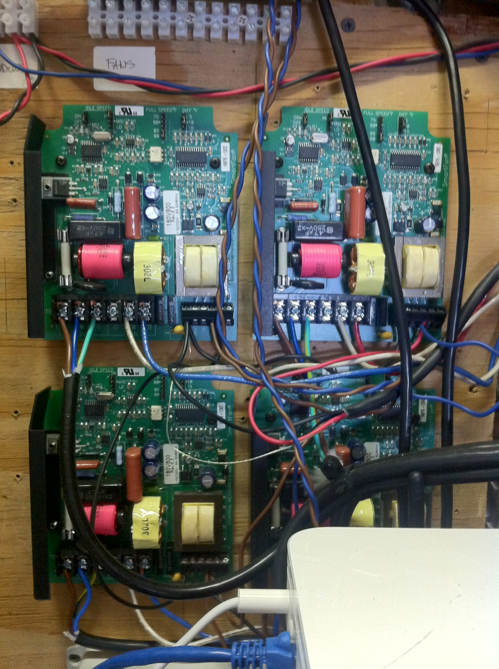
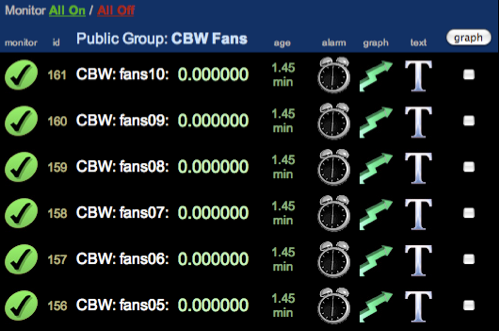
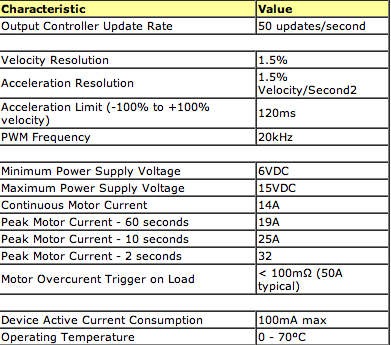 According to this chart, the reason the motor control board started smoking last class was because the current was too much for the board to handle, not because of the wires.
According to this chart, the reason the motor control board started smoking last class was because the current was too much for the board to handle, not because of the wires.  Today, we spent the first twenty minutes of class going over everyone's weblog. We made sure everything was up to date and organized. Then, we spent the rest of class working on our independent projects. Lucas, Awe, and I decided to power the iBoat motor using the car battery we have been using, and control it using the phidgets motor control board. To do this we first plugged in the iBoat motors positive (red) and negative (black) wires. Then, we plugged in the USB cord into the phidgets motor control board and into our computer so we could control the motor. Then, we have to plug the positive and negative wires into the phidgets motor control board and into the car battery. When we connected the battery to the phidgets motor control board, smoke instantly started to come from the power source (on the phidgets motor control board.) As soon as we saw the smoke, we immediately disconnected the wires from the battery. We think the circuit shorted out and started to smoke because we needed a bigger wire to connect to the battery. Though we did not have enough time to control the motor because of the smoke, we did get a chance to see that the motor is capable of going very fast. Next class we hope to try this again with bigger wires, and if we are successful with this we are also going to try and figure out how to control the motor using the phidgets motor control board wirelessly. Because the motor is too fast to take the iBoat into the HPA pool, the next step in this project would be to take the iBoat into the ocean with the cameras we used last class.
Today, we spent the first twenty minutes of class going over everyone's weblog. We made sure everything was up to date and organized. Then, we spent the rest of class working on our independent projects. Lucas, Awe, and I decided to power the iBoat motor using the car battery we have been using, and control it using the phidgets motor control board. To do this we first plugged in the iBoat motors positive (red) and negative (black) wires. Then, we plugged in the USB cord into the phidgets motor control board and into our computer so we could control the motor. Then, we have to plug the positive and negative wires into the phidgets motor control board and into the car battery. When we connected the battery to the phidgets motor control board, smoke instantly started to come from the power source (on the phidgets motor control board.) As soon as we saw the smoke, we immediately disconnected the wires from the battery. We think the circuit shorted out and started to smoke because we needed a bigger wire to connect to the battery. Though we did not have enough time to control the motor because of the smoke, we did get a chance to see that the motor is capable of going very fast. Next class we hope to try this again with bigger wires, and if we are successful with this we are also going to try and figure out how to control the motor using the phidgets motor control board wirelessly. Because the motor is too fast to take the iBoat into the HPA pool, the next step in this project would be to take the iBoat into the ocean with the cameras we used last class. 
 Then, we split off into our independent projects. Lucas, Awe and I controlled motors using a car battery and the phidgets application. To do this you first have to screw drive the positive (red) and negative (yellow) wires of the motor into the phidgets motor control board. Then, you screw drive the positive (white) and negative (black) wires into the power source on the phidgets control board and hook the wires onto the car battery. After that, you plug it into the computer using the USB cord so you can control the motors using the phidgets application found in system preferences.
Then, we split off into our independent projects. Lucas, Awe and I controlled motors using a car battery and the phidgets application. To do this you first have to screw drive the positive (red) and negative (yellow) wires of the motor into the phidgets motor control board. Then, you screw drive the positive (white) and negative (black) wires into the power source on the phidgets control board and hook the wires onto the car battery. After that, you plug it into the computer using the USB cord so you can control the motors using the phidgets application found in system preferences.